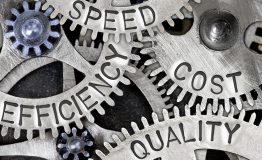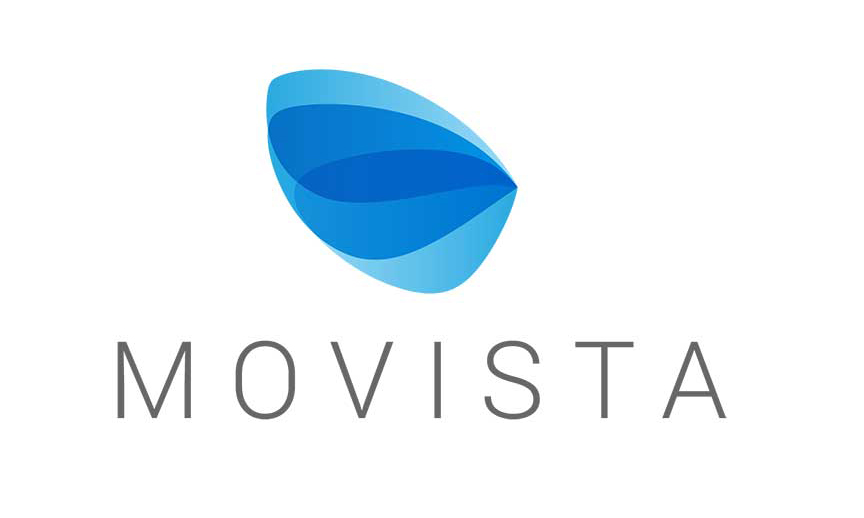Sponsored content
by Movista / a Software as a Service company
How inefficiency drains your bottom line
Whether it’s through duplication of efforts, tedious manual processes or employee productivity, inefficiency can cost your business anywhere from 20-30 percent annually.
 Imagine this: You’re managing the hectic demands of running a business. It’s your responsibility to ensure revenue increases for your investors. Suddenly, you realize there is a hole rusted through the bottom of the bucket where you keep all your profits and your hard-earned dollars have been slowing trickling into the dirt. Lost forever. You ask yourself, “Why didn’t I see it sooner?” Sadly, the reality is that you are probably already working with various levels and forms of inefficiency in your operations, and whether you’ve identified those blind spots or not, it could be costing you up to 20-30 percent of your profits each year.
Imagine this: You’re managing the hectic demands of running a business. It’s your responsibility to ensure revenue increases for your investors. Suddenly, you realize there is a hole rusted through the bottom of the bucket where you keep all your profits and your hard-earned dollars have been slowing trickling into the dirt. Lost forever. You ask yourself, “Why didn’t I see it sooner?” Sadly, the reality is that you are probably already working with various levels and forms of inefficiency in your operations, and whether you’ve identified those blind spots or not, it could be costing you up to 20-30 percent of your profits each year.
Here are some of the ways inefficiency impacts your business, your bottom line and your teams—and what you can do about it.
Costs
Inefficiency adds cost and drains your bottom line, whether the cost is created by duplication of efforts, poor planning causing overages and fees, rush shipping costs, excess inventory or waste…or, in the worst-case scenario, loss of a client account.
Clearly communicating your company’s goals and direction, defining everyone’s roles and responsibilities and being transparent about progress made toward completion of those goals will go a long way toward keeping everyone on track, in their correct lanes and delivering excellent work on time. Utilizing a third-party SaaS, like One by Movista, can help get all your employees on the same page, communicate priorities and goals and help accurately report project completion status, mileage and expenses.
Productivity
Scenario 1: Your team has to put in extra hours at work, scrambling to correct mistakes on an order or complete missed deliverables before a deadline. Scenario 2: One employee has noted that her workload is heavier than her coworkers by comparison, and she feels like she’s struggling to stay above water and worries that she’ll make mistakes. Scenario 3: An employee who’s being micromanaged by the boss may feel like he’s not trusted to do his job efficiently.
While created by various levels of inefficiency, these are all examples of issues that can drive the negative attitudes that impact productivity—and, ultimately, employee morale.
Logically, an employee who’s tired or distracted by other worries just won’t generate the same level of work in the same number of hours as an employee who’s well-rested, confident and fulfilled by her work.
Since morale has quite a bit to do with getting the best and most out of your company’s available work hours, ensuring that you find ways to make the workplace more enjoyable, safer, cleaner or even less boring can go a long way here.
Time
It’s a hard truth, but we all have the same 24 hours every day, so it’s up to you to prioritize your time and make the most of what you’ve got. Time wasted is lost forever; you can’t get it back. If you find yourself waiting on a process to run, a response from a colleague or direction from a manager—that’s time lost, which means money lost.
 What’s slowing you down? If an old machine has gotten painfully slow or you’re using outdated software that needs to be upgraded, then make the investment toward your long-term growth and replace those things. If you spend more time in meetings about work than you do getting to do actual work, that’s a problem. Get rid of unnecessary meetings, institute a “no agenda, no meeting” rule, or keep meetings to brief, 15 minute timeframes to ensure you get right to the point and get the information you need. Long response time from associates? Work on a prioritization plan for handling email responses in a reasonable amount of time. Taking too long to complete projects or tasks in the field? Try utilizing a platform, like ONE by Movista, to help get your team aligned and organized.
What’s slowing you down? If an old machine has gotten painfully slow or you’re using outdated software that needs to be upgraded, then make the investment toward your long-term growth and replace those things. If you spend more time in meetings about work than you do getting to do actual work, that’s a problem. Get rid of unnecessary meetings, institute a “no agenda, no meeting” rule, or keep meetings to brief, 15 minute timeframes to ensure you get right to the point and get the information you need. Long response time from associates? Work on a prioritization plan for handling email responses in a reasonable amount of time. Taking too long to complete projects or tasks in the field? Try utilizing a platform, like ONE by Movista, to help get your team aligned and organized.
Whatever you need to do to create more efficiency in your team, it’s important to be considerate of others’ time and protective of yours.
Trust
An inefficient project management process can breed mistrust within a company and impact morale. If employees start to sense the “Boy Who Cried Wolf” pattern in the workplace, it tends to create some disenchantment—or an “I’ll believe it when I see it” mindset that results in poor adoption of changes down the line.
 When projects are announced only to drop off altogether, when timelines are set but not adhered to or when management doesn’t lead by example to meet the goals they have set for the business, that will damage trust and credibility with employees and clients alike.
When projects are announced only to drop off altogether, when timelines are set but not adhered to or when management doesn’t lead by example to meet the goals they have set for the business, that will damage trust and credibility with employees and clients alike.
The first step toward helping your business run more smoothly, with less wasted time and effort, is to start by identifying what isn’t working for you. Maybe you’ve already recognized a few issues to tackle, the sort of things that always make you think to yourself, “there MUST be a better way to do this!”
Providing additional clarity and transparency in your communications with your team can also garner added traction toward creating efficiency. By helping your employees understand the bigger picture and defining goals, roles and responsibilities, you’ll be able to provide a plan where everyone knows what they’re supposed to be doing, when they’re doing it and why. These steps can help you positively impact your bottom line, and, before you know it, you’ll be able to afford to replace that rusty old imaginary bucket with a sturdy, shiny new one.


